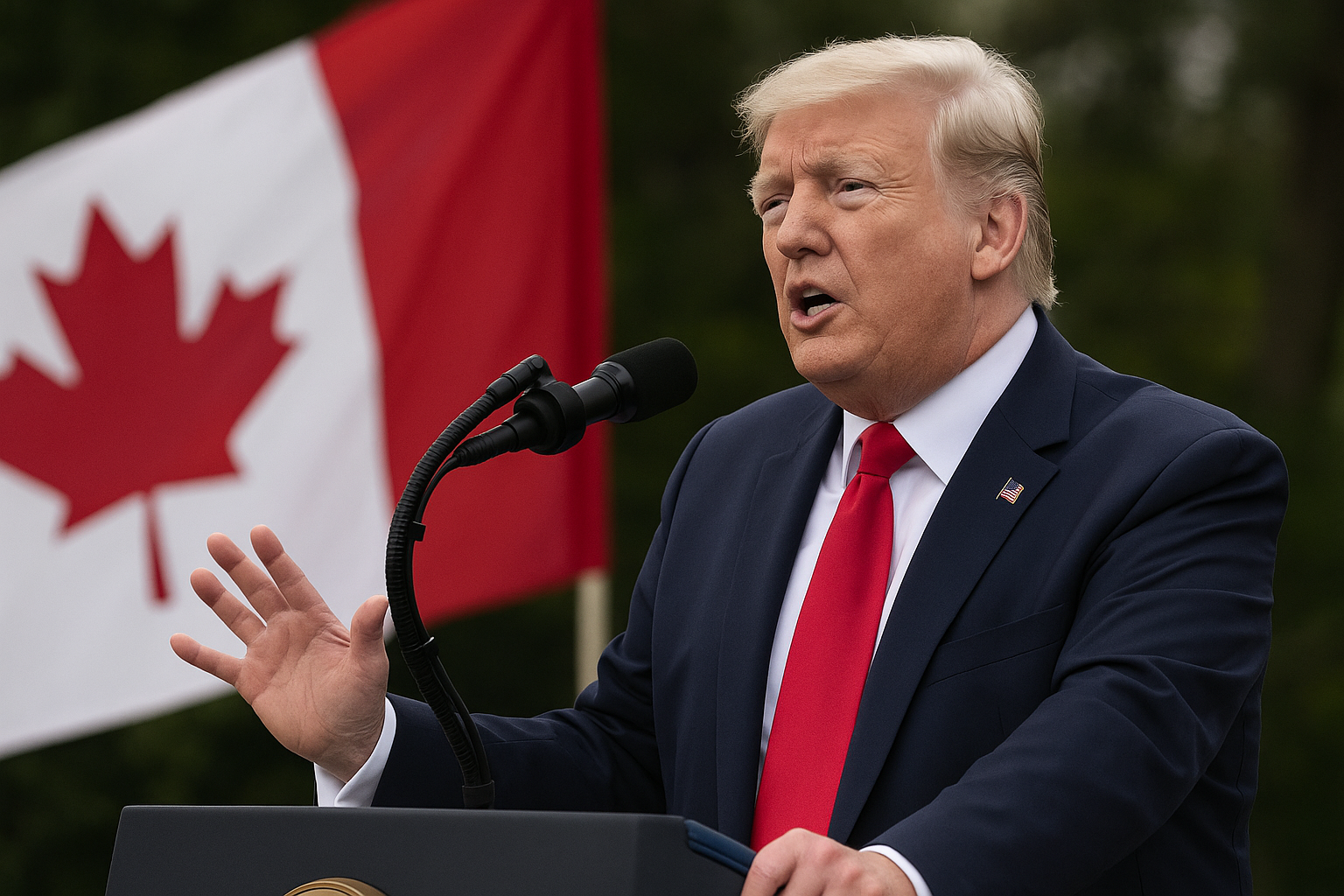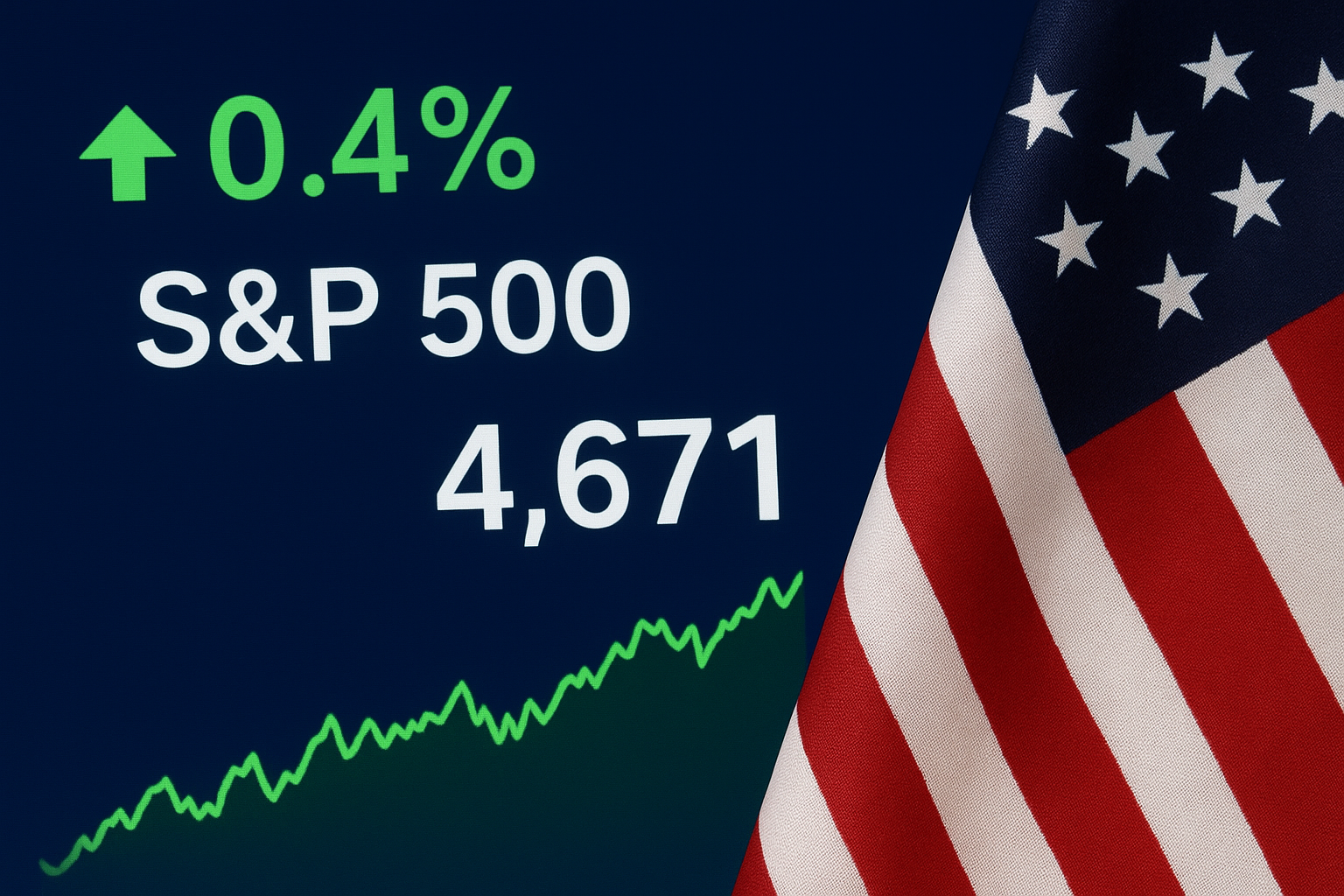In a stunning escalation of North American trade tensions, U.S. President Donald Trump announced the immediate termination of all trade negotiations with Canada, citing what he called “a fraudulent and disrespectful” political advertisement released by Ontario’s provincial government. The ad—featuring a digitally altered version of Ronald Reagan’s voice opposing tariffs—has ignited controversy across both nations and rattled investors reliant on one of the world’s most integrated trade relationships.
The Ronald Reagan Presidential Foundation swiftly condemned the video, calling it an unauthorized manipulation of the former president’s words. “President Reagan’s legacy should not be exploited for partisan or commercial purposes,” the Foundation said in a statement reported by Reuters and Politico.
Political Shockwaves Meet Market Realities
The U.S.–Canada economic corridor accounts for over $900 billion in annual bilateral trade, spanning automobiles, agriculture, energy, and manufacturing. The sudden freeze on negotiations threatens to disrupt an already fragile regional supply chain that has been recovering from pandemic-era bottlenecks and ongoing tariff adjustments under the Trump administration’s renewed protectionist agenda.
While full trade termination is not yet in effect, markets are already signaling unease. The Canadian dollar (CAD) weakened modestly against the U.S. dollar, while futures for key Canadian export sectors—especially autos, lumber, and oil—faced increased volatility. U.S. manufacturers with cross-border dependencies, such as auto part suppliers and agricultural processors, are also exposed to near-term disruptions.
“This is not just a symbolic fallout,” said a senior trade analyst at RBC Capital Markets. “If this rhetoric translates into tariffs or suspended agreements, the real impact could show up in Q4 earnings guidance for companies with strong cross-border exposure.”
Why This Matters for Investors
For investors, the political drama transcends headlines—it touches the structural backbone of the North American economy. The U.S. and Canada are each other’s largest trading partners, with integrated supply chains that move thousands of components and resources daily across the border. Even a temporary breakdown in trade cooperation could have ripple effects on sectors representing nearly 40% of North American GDP.
- Automotive: The North American auto industry relies heavily on cross-border manufacturing. Disruptions could affect companies like General Motors ($GM) and Magna International ($MG.TO), both of which maintain production facilities on both sides.
- Energy: With over 3 million barrels of oil per day flowing from Canada to the U.S., energy markets may react sharply if new trade barriers arise. Watch stocks like Enbridge ($ENB) and TC Energy ($TRP) for early indicators.
- Manufacturing and Materials: Industrial players including Caterpillar ($CAT) and Alcoa ($AA) could see sourcing challenges if tariff policies extend beyond rhetoric.
Investors should also note that Canadian exporters—especially those in forestry, metals, and agri-food—could face price pressure or delayed shipments if tariffs or political retaliation follow.
Future Trends to Watch
Analysts suggest this trade standoff could either escalate into a broader tariff war or be defused through diplomatic backchannels before year-end. Canada’s federal government has yet to issue a direct policy response, but officials in Ottawa are reportedly seeking clarification from Washington on the scope of the termination.
From a policy standpoint, this event underscores a wider global pattern: the weaponization of trade as a political tool. As domestic politics increasingly influence foreign economic relations, investors should brace for heightened volatility in politically exposed sectors.
Market watchers will also keep an eye on currency markets, where shifts in the CAD–USD pair could offer insight into how institutional investors are pricing geopolitical risk.
Key Investment Insight
For now, the prudent investor approach is selective exposure. Companies with diversified sourcing networks and limited dependence on cross-border logistics are better positioned to weather near-term turbulence. Meanwhile, short-term traders may find opportunity in currency hedging or volatility plays tied to CAD/USD movements.
Longer term, if trade normalization falters, we could see reshoring trends accelerate—particularly in critical sectors like autos, batteries, and semiconductors. That could present upside for U.S.-based infrastructure and logistics firms.
As the U.S.–Canada trade story unfolds, investors should track official statements from both governments, as well as corporate guidance from key cross-border players in upcoming earnings reports.
Stay tuned to MoneyNews.Today for real-time analysis on how political shocks are shaping financial markets worldwide.





